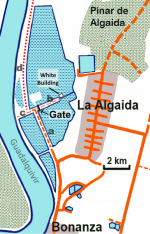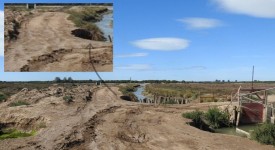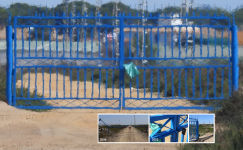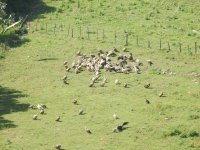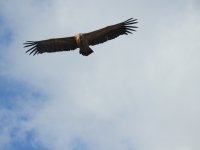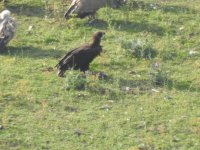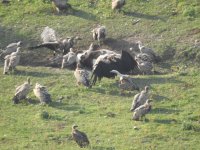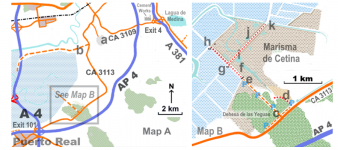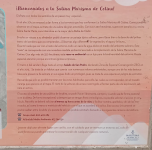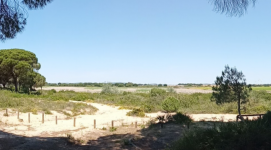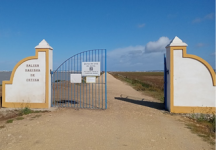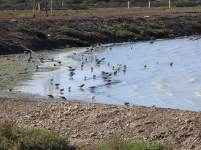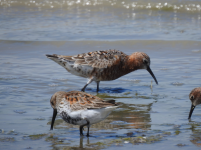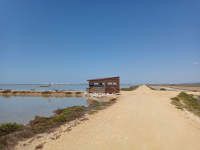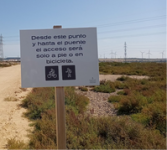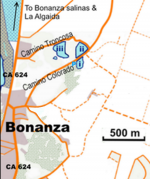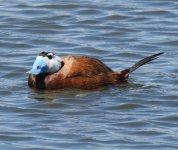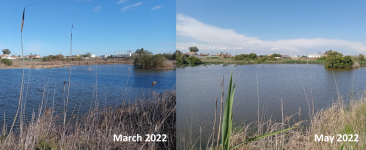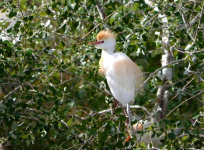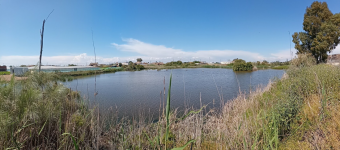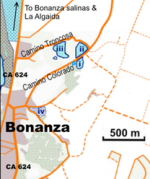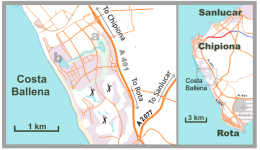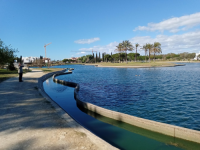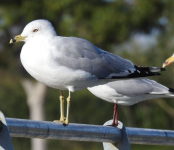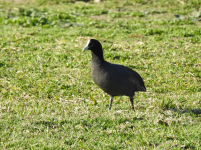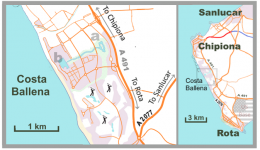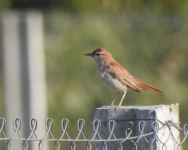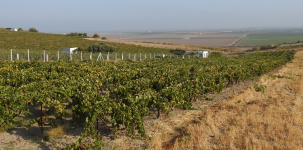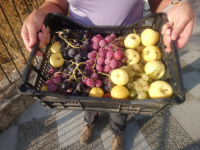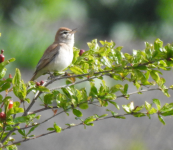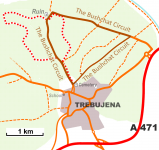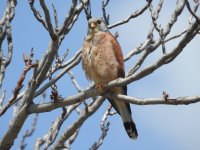John Cantelo
Well-known member
With the autumnal birding season in the southwest corner of Spain - Cadiz Province - rapidly approaching I think it is opportune to share some of the information gleaned there in my first spring visit post-Covid in April/May 2022. Although birders understandably congregate along the Straits (esp. in autumn) many seem not to fully appreciate just how good the rest of the province is for birding (esp in spring). This is why I wrote my guide - a labour of love (literally so in recent years) - to birding sites in the area which I freely share with birders (although I do invite folks to make donations to charity). Although all of the information is in my blog and/or notes, in an attempt to reach a wider audience I thought I'd kick off a thread on the area here (in part to replace that started by the late & much lamented 'Eddie the Eagle'). Hopefully, now that I have wi-fi in Spain I will be able to add further posts when I'm next out there. Perversely, though, I'll start with a neglected site which is probably not at its best in late summer/autumn but it is so neglected that I thought I'd highlight it here.
Laguna de Jeli has probably been overlooked by birders because Laguna de Medina offers many of the same birds (and more), is much better known and more convenient to visit (although Laguna de Jeli is a good deal easier to visit than most imagine). Over a decade ago when I first tried to visit this laguna I couldn't find the path from the A 390 (Chiclana - Medina Sidonia road) by which it was supposed to be accessed. This was a forgivable oversight as the path was then narrow, badly overgrown and un-signposted with nowhere to pull off on the main road. How things change! The footpath (Cordel de los Merchantes) is now very well-signposted on the A 390 (although you have to stop to find out where it goes) with a convenient car park.
However, long before the path to Laguna de Jeli was upgraded I searched for an alternative easier route to the reserve and, thanks to GoogleEarth, discovered an excellent wide gravel track, the Cañada de Marchantes, which takes you to the other end of the path. Not only does this route reduce the walk to the laguna from almost 3 km to half that distance but it's also worth checking in its own right. The cañada (= droveway) follows a ridge with good views towards Medina to the east and the Bahai de Cadiz in the west. I've had both Montagu's Harrier and Black-winged Kite here and during migration periods small groups of Honey Buzzards and other raptors drift over. Other birds such as swifts, hirundines, Roller and Short-toed Lark also seem to follow the ridge. Better still, the surrounding low-intensity agricultural plots hold Rufous Bushchat. So, although it means a 10 km detour to the footpath (if arriving via the car park on the A390), it's one that's well worth it even before you get there.
Walking along the footpath down to the laguna you quickly reach an information board and viewpoint which gave scenic views of the laguna c1 km away. Further along the path, there's a 350m long boardwalk through the bushes which is raised up high enough to see over the bushes. This was followed by another viewpoint that finally gives you a useful view of the laguna and then a slatted hide that overlooks the nearest edge of the laguna. The hide might be further away than ideal (c150-200m depending on water levels) but, if you have a 'scope, you should be able to identify most of the wildfowl here which, with White-headed, Ferruginous and Marbled Ducks potentially on the 'menu', could be worth the walk.
The Laguna de Jeli is a 'hidden gem' set in rolling countryside with terrific views and as such is well worth seeking out and exploring, particularly in winter and spring.
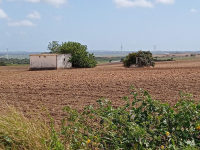 . Even if the laguna is quiet and relatively birdless, this is a great area with much potential for a visiting birder to find something for themselves.
. Even if the laguna is quiet and relatively birdless, this is a great area with much potential for a visiting birder to find something for themselves.
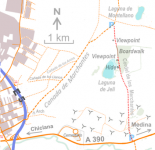
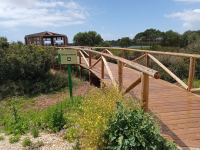
Laguna de Jeli has probably been overlooked by birders because Laguna de Medina offers many of the same birds (and more), is much better known and more convenient to visit (although Laguna de Jeli is a good deal easier to visit than most imagine). Over a decade ago when I first tried to visit this laguna I couldn't find the path from the A 390 (Chiclana - Medina Sidonia road) by which it was supposed to be accessed. This was a forgivable oversight as the path was then narrow, badly overgrown and un-signposted with nowhere to pull off on the main road. How things change! The footpath (Cordel de los Merchantes) is now very well-signposted on the A 390 (although you have to stop to find out where it goes) with a convenient car park.
However, long before the path to Laguna de Jeli was upgraded I searched for an alternative easier route to the reserve and, thanks to GoogleEarth, discovered an excellent wide gravel track, the Cañada de Marchantes, which takes you to the other end of the path. Not only does this route reduce the walk to the laguna from almost 3 km to half that distance but it's also worth checking in its own right. The cañada (= droveway) follows a ridge with good views towards Medina to the east and the Bahai de Cadiz in the west. I've had both Montagu's Harrier and Black-winged Kite here and during migration periods small groups of Honey Buzzards and other raptors drift over. Other birds such as swifts, hirundines, Roller and Short-toed Lark also seem to follow the ridge. Better still, the surrounding low-intensity agricultural plots hold Rufous Bushchat. So, although it means a 10 km detour to the footpath (if arriving via the car park on the A390), it's one that's well worth it even before you get there.
Walking along the footpath down to the laguna you quickly reach an information board and viewpoint which gave scenic views of the laguna c1 km away. Further along the path, there's a 350m long boardwalk through the bushes which is raised up high enough to see over the bushes. This was followed by another viewpoint that finally gives you a useful view of the laguna and then a slatted hide that overlooks the nearest edge of the laguna. The hide might be further away than ideal (c150-200m depending on water levels) but, if you have a 'scope, you should be able to identify most of the wildfowl here which, with White-headed, Ferruginous and Marbled Ducks potentially on the 'menu', could be worth the walk.
The Laguna de Jeli is a 'hidden gem' set in rolling countryside with terrific views and as such is well worth seeking out and exploring, particularly in winter and spring.
 . Even if the laguna is quiet and relatively birdless, this is a great area with much potential for a visiting birder to find something for themselves.
. Even if the laguna is quiet and relatively birdless, this is a great area with much potential for a visiting birder to find something for themselves. 





